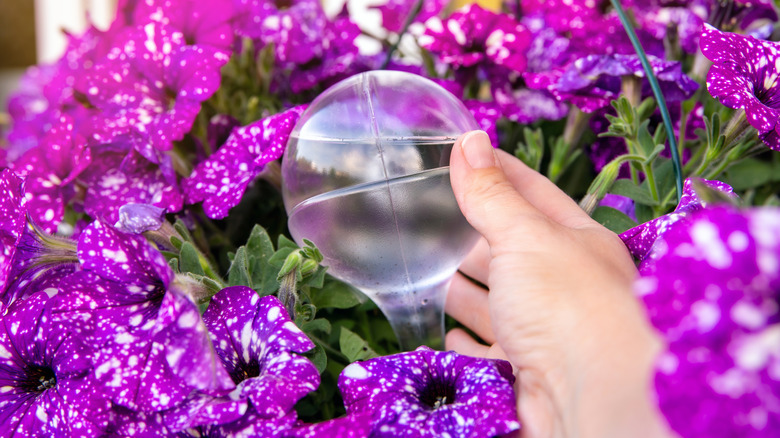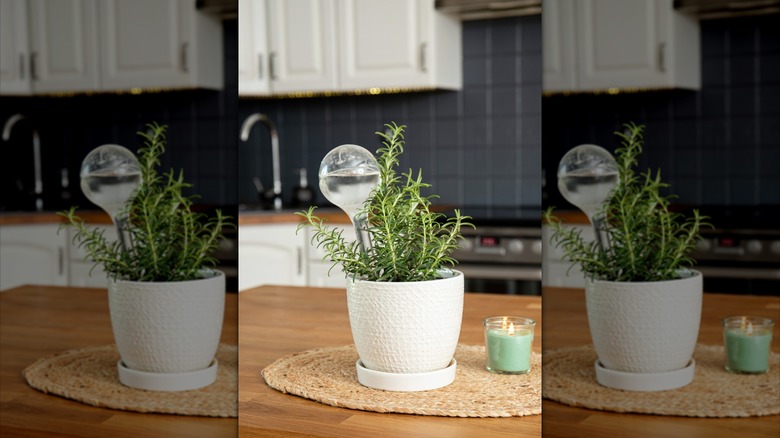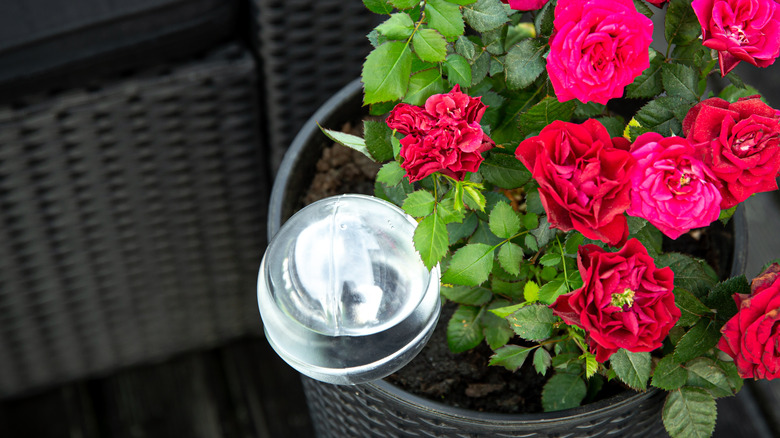Why You Should Be Using Irrigation Globes In Your Garden
Irrigation globes, also known as watering or plant globes, are self-watering devices designed to provide a consistent and controlled water supply to various types of plants. These globes typically consist of a hollow glass or plastic bulb with a long neck that is inserted into the soil. As the soil dries out, water is drawn from the globe into the soil, maintaining a steady level of moisture around the plant's root system. Since the globes release water gradually, they can also prevent you from overwatering or underwatering your plants. This is particularly useful for people who may have irregular watering habits or for plants that require consistent moisture levels to thrive. The self-watering feature is also useful during periods when you might be away, ensuring that plants receive enough hydration in the meantime.
Additionally, using irrigation globes is a genius tip for watering your garden because they can help to minimize chances of wasting water. Typical watering methods like manual watering often lead to excess water usage as gardeners can be heavy handed in hydrating their plants. On the other hand, irrigation globes help you deliver water directly to the plant's roots, reducing the risk of runoff or evaporation. What's great is that these devices are versatile and can be used in your outdoor gardens, indoor potted plants, and even greenhouses. With their ease of use, water conservation benefits, and the ability to promote healthy plant growth, irrigation globes are a practical and efficient tool to effectively water any of your plants, so you should definitely consider incorporating them into your gardening.
When you should use irrigation globes
Irrigation globes offer advantages to many types of plants. One ideal scenario for using irrigation globes is when caring for your container plants, both indoors and outdoors. Potted plants often require more frequent watering as their soil tends to dry out faster than that of plants in the ground. As irrigation globes provide a consistent water supply, they guarantee that your container plants get the moisture they need without the risk of overwatering or dehydration.
Additionally, during periods of hot and dry weather, when the demand for water increases, irrigation globes will save you some sweat. Plants, especially those with shallow roots, may suffer from heat stress and dehydration in such conditions. Prayer plants, pothos, and African violets are a few of the houseplants with shallow roots that could benefit from watering globes. The slow and steady release of water from the globes helps maintain a stable soil moisture level, supporting your plants through periods of intense heat.
If you've got certain plants with strict watering needs and you happen to be stepping out on vacation, then an irrigation bulb is right for you! For instance, your ferns or tropical plants that love moist soil will thrive with the regulated hydration. These watering devices are perfect for keeping your plants well hydrated when you're away, so you can relax freely knowing your precious green children won't die of thirst in your absence.
When you shouldn't use irrigation globes
While irrigation globes can be beneficial for many of your plants, there are some scenarios in which they may not be the best watering solution. Irrigation globes provide a uniform water supply, which may not cater to the specific needs of all of your plants simultaneously. If you have plants with varying water requirements within the same garden bed, use alternative methods that allow for more precise control over water distribution, such as drip irrigation systems. Some herbs for example, like rosemary and lavender, are drought tolerant, while others, like basil, are not.
Another drawback of irrigation globes is their water-holding capacity, which can be insufficient for your larger plants or those with extensive root systems. For these plants, drip lines or soaker hoses may be a better option. Drip lines deliver a controlled and adjustable amount of water directly to the root zones of plants, and this method is great for larger gardens in which a dozen or so globes would be necessary.
If you're looking for a great method for watering your large garden but don't want to purchase dozens of irrigation globes, consider using a few ollas instead. Ollas, or porous clay watering vessels, offer a similar solution to watering globes but in higher quantities. Buried in the soil, ollas also release water gradually and can adapt to the surrounding moisture levels to keeping your plants well hydrated.


